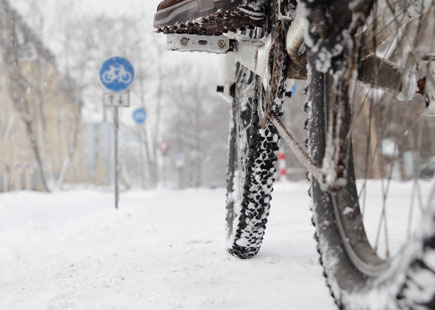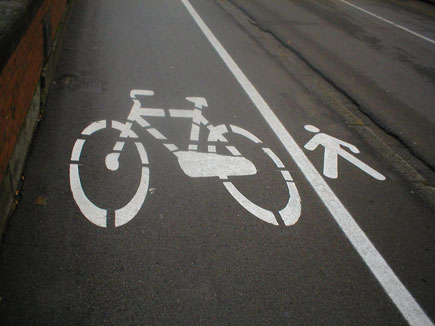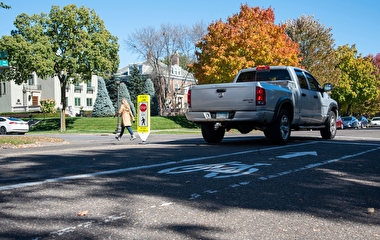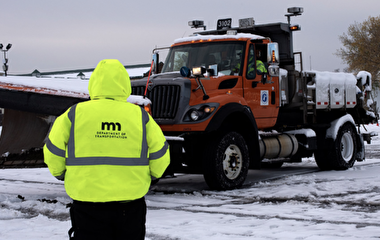To effectively plan and manage nonmotorized transportation infrastructure, decision makers need information about the factors that affect demand for bicycling and walking, including variations in weather and climate.
Planners and engineers frequently use monthly and seasonal adjustment factors to estimate annual average daily traffic (AADT) from data collected during short-duration traffic counts. However, bicycle and pedestrian traffic can fluctuate significantly in response to variations in weather, resulting in different monthly and seasonal patterns across the nation, within individual states and, potentially, within individual regions. Practitioners currently lack information about the extent of these variations and the extent to which these factors can be transferred and used across different areas.
To fill this gap, Greg Lindsey, a professor at the Humphrey School of Public Affairs, and Alireza Ermagun, a former Humphrey School master’s student, participated in a research effort that explored how weather variations affect urban trail use by bicyclists and pedestrians in cities throughout the country. Lindsey and Ermagun partnered with a researcher from George Washington University on the project, which was conducted with funding from the members and supporters of the Rails-to-Trails Conservancy.
As part of the study, the researchers monitored multiuse trail traffic in 13 cities located in seven different climate zones across the United States. Multiuse trails are off-road facilities that serve bicyclists and pedestrians for utilitarian, recreational, and other purposes. In urban areas, these trails help minimize interactions with vehicle traffic and provide safe, comfortable places for travel.
Based on the monitoring data, researchers estimated average daily bicyclists (ADB) and average daily pedestrians (ADP) under varying weather conditions at different times of year. Using this data, the research team specifically explored the effects of variation in temperature, precipitation, wind speed, dew point, and snow depth on ADP and ADB. Significant study findings include:
- Bicyclists and pedestrians in the same climate region respond differently to variations in specific weather variables such as temperature and precipitation.
- Bicyclists and pedestrians in different climate regions both respond differently to variations in weather.
- Daily average temperature is the most important variable affecting trail demand. Bicyclists are more sensitive to temperature than pedestrians in five of the seven climate regions. Bicyclists are also more sensitive to snow and average wind speed.
According to the researchers, these findings underscore the fact that demand and user patterns vary across the country and that these factors need to be considered when analyzing trail use. For example, the data show that seasonal use patterns in Duluth (in the “very cold” climate region) and Minneapolis (in the “cold” region) are very different, even though the cities are only about 135 miles apart. This demonstrates that seasonal factors should not be transferred across regions, the researchers say. Instead, practitioners should use models from their immediate geographic location or comparable climates.
Ultimately, the study’s findings could help practitioners and funding agencies better plan systems and facilities, optimize investments, and increase efficiency of trail operations and maintenance. Potential uses for the information include helping to improve the accuracy of tools used to estimate AADT and informing operational decisions about whether to maintain trails in winter or when to resurface facilities in summer.
The research team says future work could focus on more clearly defining the factors that contribute to the variations found in this study. For instance, it’s likely that trail users in particular regions have adjusted to the local climate and common weather conditions. This factor, which could be explored by surveying bicyclists and pedestrians, could help account for differences in response to specific weather variables across regions.




